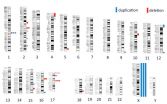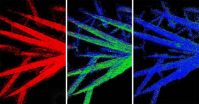(Press-News.org) WASHINGTON, DC, APRIL 20, 2015--A new guideline released today by the American Academy of Neurology (AAN) and the American Epilepsy Society (AES) found that administering an antiepileptic medication immediately after a first seizure reduces the risk of having another seizure within two years. The guideline, authored by Allan Krumholz, MD, a professor of neurology at the University of Maryland School of Medicine and physician at the Maryland Epilepsy Center at the University of Maryland Medical Center, is the first to address treatment of a first seizure in adults. A previous guideline -- also authored by Dr. Krumholz -- addresses how to evaluate a first seizure in adults.
"Determining whether to treat a patient after a first seizure is a complex process, but this guideline supports the use of medication in some cases and could influence standard practice for many physicians," says Dr. Krumholz. "A single seizure could be a sign of epilepsy. Even one seizure is traumatic and can affect many aspects of an individual's life from driving a car to employment options. This guideline clarifies when a person's risk for another seizure warrants medication."
About 150,000 adults have an unprovoked (occurring when an acute brain disturbance cannot be identified as the cause) first seizure in the United States each year, and one in 26 Americans will develop epilepsy -- defined as one or more unprovoked seizures with a high likelihood of recurrence -- in their lifetime.
"This important guideline has important implications for epilepsy patients and healthcare providers across the country and beyond," says E. Albert Reece, MD, PhD, MBA, vice president for Medical Affairs, University of Maryland, and the John Z. and Akiko K. Bowers Distinguished Professor and Dean of the School of Medicine. "Through their research and advanced practice of patient care, our neurology faculty continue to make meaningful contributions to improving outcomes and quality of life for patients facing the challenges of neurological disease."
The guideline states that for adults who have had a first seizure, the risk of another seizure is greatest within the first two years. The risk ranges from about a one-in-five chance, or 21 percent, to nearly a one-in-two chance, or 45 percent.
The risk of another seizure is greatest in those with a previous brain injury such as a stroke, tumor or head trauma. Risk is also high for those with a significant abnormality on imaging tests of the brain, an EEG test result that shows signs of epilepsy or a seizure that occurred during sleep.
According to the guideline, immediate treatment with an antiepileptic medication lowers the risk of another seizure by 35 percent within the first two years. "About half of patients who have a first seizure will never have another seizure, but for the other half, immediate drug therapy may help," says Dr. Krumholz, who stresses that the guideline should be used by physicians to help inform patients of their individual risk of a second seizure and involve them in the decision-making process.
While treatment was shown to provide a short-term benefit, over the longer term of more than three years, treating a first seizure immediately rather than waiting for another seizure to occur is unlikely to increase or decrease the likelihood of remaining seizure-free.
The guideline notes that seven to 31 percent of patients who take an antiepileptic drug will experience a drug side effect; however, these are usually mild and can be reversed when a patient is switched to another drug or the dose is lowered.
The guideline was presented at the AAN's 67th Annual Meeting in Washington, DC and published in the April 21, 2015, issue of Neurology®, the medical journal of the AAN.
INFORMATION:
About the University of Maryland School of Medicine
The University of Maryland School of Maryland, chartered in 1807 as the first public medical school in the United States, continues today as a leader in accelerating innovation and discovery in medicine. The School of Medicine is the founding school of the University of Maryland, and is an integral part of the 11-campus University System of Maryland. Located on the University of Maryland's Baltimore campus, the School of Medicine works closely with the University of Maryland Medical Center and Medical System to provide a research-intensive, academic and clinically based education. With 43 academic departments, centers and institutes and a faculty of more than 3,000 physicians and research scientists, plus more than $400 million in extramural funding, the School is regarded as one of the leading biomedical research institutions in the U.S., with top-tier faculty and programs in vaccine development, cancer, brain science, surgery and transplantation, trauma and emergency medicine, and human genomics, among other centers of excellence. The School is not only concerned with the health of the citizens of Maryland and the U.S., but also has a global presence, with research and treatment facilities in more than 35 countries around the world. For more information, visit http://www.medschool.umaryland.edu.
About the University of Maryland Medical Center
The University of Maryland Medical Center (UMMC) is comprised of two hospitals in Baltimore: an 800-bed teaching hospital -- the flagship institution of the 12-hospital University of Maryland Medical System (UMMS) -- and a 200-bed community teaching hospital, UMMC Midtown Campus. UMMC is a national and regional referral center for trauma, cancer care, neurocare, cardiac care, diabetes and endocrinology, women's and children's health and has one of the largest solid organ transplant programs in the country. All physicians on staff at the flagship hospital are faculty physicians of the University of Maryland School of Medicine. At UMMC Midtown Campus, faculty physicians work alongside community physicians to provide patients with the highest quality care. UMMC Midtown Campus was founded in 1881 and is located one mile away from the University Campus hospital. For more information, visit http://www.umm.edu.
NEW YORK, NY (April 20, 2015) -- A significant proportion of children with chronic kidney disease (CKD) have unsuspected chromosomal imbalances, including DNA anomalies that have been linked to neurocognitive disorders, according to a new Columbia University Medical Center (CUMC) study. The findings suggest that routine genetic screening of children with CKD could lead to earlier and more precise diagnoses, as well as to more personalized monitoring, prevention, and treatment. Details of the study were published today in the online issue of the Journal of Clinical investigation.
"With ...
Every year, more than 120 million prescriptions are written worldwide for thiazide drugs, a group of salt-lowering medicines used to treat high blood pressure. These drugs are often work very well, and over decades have saved hundreds of thousands of lives.
But in some patients, thiazides are not effective; in others they lower blood pressure for a while and then stop working. The reasons for this have remained a mystery. Now, a new study by researchers at the University of Maryland School of Medicine (UM SOM) has revealed a key mechanism for this failure.
Paul Welling, ...
Following a first seizure, physicians should discuss with patients whether it is appropriate to prescribe medication to reduce risk of another seizure, according to new guidelines released at the American Academy of Neurology meeting.
The guidelines, which were a collaboration of authors at several North American medical institutions including NYU Langone Medical Center, found adults who experience a first seizure may have risk of another seizure that's greatest within the first two years. Adults with prior neurological trauma, abnormalities on EEGs and imaging may be ...
Access to high-quality medicine is a basic human right, but over four billion people live in countries where many medications are substandard or fake. Marya Lieberman of the Department of Chemistry and Biochemistry at the University of Notre Dame and Abigail Weaver a postdoctoral associate in the University's Department of Civil Engineering and Environmental and Earth Sciences took up the challenge of how people in developing countries could detect low quality antimalarial drugs without expensive equipment and without handling dangerous chemicals.
The solution they ...
MADISON, Wis. -- In a move that could improve the energy storage of everything from portable electronics to electric microgrids, University of Wisconsin-Madison and Brookhaven National Laboratory researchers have developed a novel X-ray imaging technique to visualize and study the electrochemical reactions in lithium-ion rechargeable batteries containing a new type of material, iron fluoride.
"Iron fluoride has the potential to triple the amount of energy a conventional lithium-ion battery can store," says Song Jin, a UW-Madison professor of chemistry and Wisconsin Energy ...
Toronto, CANADA - Imagine living a healthy, normal life without the ability to re-experience in your mind personal events from your past. You have learned details about past episodes from your life and can recite these to family and friends, but you can't mentally travel back in time to imagine yourself in any of them.
Cognitive scientists from Baycrest Health Sciences' Rotman Research Institute in Toronto had a rare opportunity to examine three middle-aged adults (two from the U.S., the other from the U.K.) who essentially live their lives in the "third person" because ...
Tryptophan is an amino acid, one of the building blocks of proteins. It is used extensively to study how proteins change their 3D structure, and also how they interact with other proteins and molecules. This is studied with a fluorescence technique called FRET, which measures the transfer of energy from tryptophan to another molecule. But in some cases, FRET data could be distorted because tryptophan transfers an electron instead of energy. Using a unique spectroscopic technique, scientists at EPFL have now confirmed for the first time that this is indeed the case. The ...
CAMBRIDGE, Mass. (April 20, 2015) - A novel approach that allows real-time imaging of the immune system's response to the presence of tumors--without the need for blood draws or invasive biopsies--offers a potential breakthrough both in diagnostics and in the ability to monitor efficacy of cancer therapies.
The method, developed in the lab of Whitehead Institute Member Hidde Ploegh and reported online this week in the Proceedings of the National Academy of Sciences (PNAS), harnesses the imaging power of positron emission tomography (PET), which is normally used to monitor ...
PHILADELPHIA, April 20, 2015 - New findings hidden within the complex machinery behind the vicious cycle of chronic inflammation and cancer are presented today by researchers from the University of Pittsburgh Cancer Institute, partner with UPMC Cancer Center, at the American Association for Cancer Research (AACR) Annual Meeting in Philadelphia.
The research is funded by the National Institutes of Health (NIH) and Fondazione RiMED, of Palermo, Italy.
Inflammation is an important immune system tool that helps the body rid itself of foreign invaders, such as bacteria. ...
New analysis of world-famous 3.46 billion-year-old rocks by researchers from the University of Bristol, the University of Oxford and UWA (the University of Western Australia) is set to finally resolve a long running evolutionary controversy.
The new research, published this week in Proceedings of the National Academy of Sciences USA, shows that structures once thought to be Earth's oldest microfossils do not compare with younger fossil candidates but have, instead, the character of peculiarly shaped minerals.
In 1993, US scientist Bill Schopf described tiny carbon-rich ...

